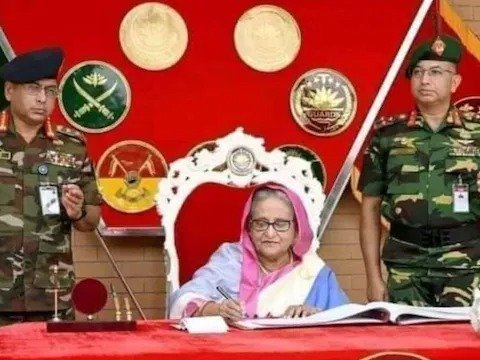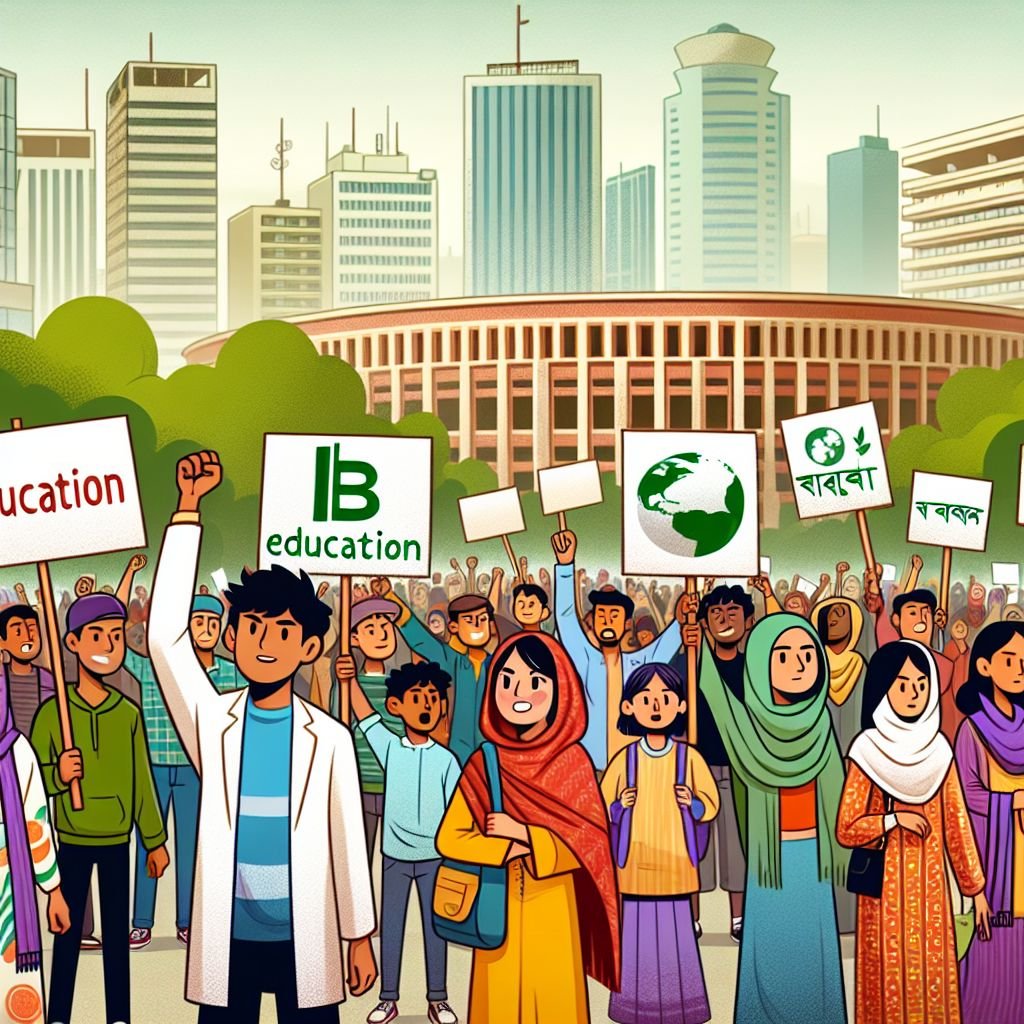In a dramatic development, Prime Minister Sheikh Hasina of Bangladesh resigned and fled the country amidst escalating political turmoil and violent protests.The resignation comes in the wake of significant unrest that has resulted in over 300 deaths and widespread destruction. Let’s, unveil the underlying conflicts and political turmoil.

THE ESCALATION OF UNREST
Initially sparked by quota reforms, the crisis in Bangladesh reached a critical point as protests intensified into broader demands for Prime Minister Sheikh Hasina’s resignation. The violence surged after deadly clashes between protesters and security forces, resulting in nearly 100 deaths in a single day. Additionally, vandalism and arson targeting public offices and ruling party establishments across 39 districts have further exacerbated the chaos.
Student activists started the unrest with quota-related demands in July. While the Supreme Court scrapped most quotas on July 21, seemingly quelling the protests, public dissatisfaction with the government’s handling of the situation reignited protests last week. Furthermore, Hasina’s failure to apologize for the violence further fueled the unrest.

HASINA’S DEPARTURE AND ITS IMPLICATIONS
Sheikh Hasina’s resignation and subsequent flight to a “safer place” reflect the severity of the situation. Reports suggest she may have been transported to India, with speculation indicating possible refuge in Agartala, Tripura. Consequently, her decision to flee underscores the intensity of the threats against her and highlights the profound instability gripping the nation.
Addressing the nation, Army Chief General Waqar-uz-Zaman confirmed Hasina’s resignation and announced the formation of an interim government. He called for calm and invited students and other stakeholders for positive talks, aiming to stabilize the situation and restore order.
BANGLADESH IN CRISIS
The crisis in Bangladesh starkly illustrates how socio-political issues can escalate into full-blown conflicts. The quota protests, originally a demand for fair representation, became a flashpoint for broader discontent with Hasina’s administration. The government’s inability to address these grievances effectively led to widespread unrest, demonstrating failures in both governance and crisis management.
Hasina’s resignation and the formation of an interim government mark a significant shift in Bangladesh’s political landscape. Thus, the interim administration will face the daunting task of navigating the country through a period of uncertainty while addressing the issues raised by the protesters. Establishing a new government and implementing potential reforms will be crucial in restoring stability and trust in the political system.
Moreover, the crisis in Bangladesh has regional ramifications, particularly for neighboring India. The Indian Border Security Force (BSF) has heightened security along the India-Bangladesh border in response to the unrest. Consequently, the situation highlights the interconnectedness of regional stability and the importance of diplomatic and security measures to manage cross-border impacts.

RESEMBLANCE FROM PAST INCIDENTS
The situation in Bangladesh bears resemblance to the recent crisis in Sri Lanka, where President Gotabaya Rajapaksa fled amid mass protests over the economic crisis. Both scenarios underscore how political instability can precipitate broader unrest and necessitate a response from regional actors and international bodies.
CONCLUSION
Bangladesh is at a crossroads, with Prime Minister Sheikh Hasina’s resignation marking a significant moment in the country’s history. The immediate focus will be on stabilizing the nation, addressing the public’s grievances, and restoring normalcy. The interim government’s actions will be closely watched, both domestically and internationally, as they navigate the complex landscape of political and social unrest. Therefore, the crisis serves as a potent reminder of the fragility of political systems and the need for responsive and inclusive governance.

